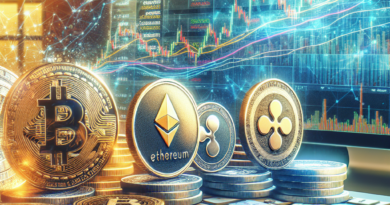Bitcoin, what (and who) is behind its decline?
“The real question is: who are we selling this stuff to?” This first quarter of the year was characterized by almost daily financial news attributable to the performance of the cryptocurrency par excellence Bitcoin.
A succession of news, frenetic, at times suffocating for those who, despite not being interesting, have nevertheless suffered its influence like a sort of contagion.
Are these considerations of ours an exaggeration? Definitely not, on the contrary, we believe they are "minimal" in this brief summary and, to dispel any doubts, we challenge anyone to prove otherwise to this FOMO 2024.
Already at the end of last year there were many expectations and the related target prices had reached values to "for n" (x2, x3, etc.), then, "the market" (if it can be defined as such) began to fill the gap between this need for confirmation and the necessary reality of the facts.
With Bitcoin initially in the $42,500 area (December 31, 2023), a phase of uncertainty first emerged with a prolonged laterality which then culminated in an identity downside of new lows (violation of $39,000 in January).
What followed, however, was the long-awaited bullish escalation which, to the benefit of the respective owners, transformed their virtual wealth into apparent reality.
All in just over a few weeks.
Seven specifically.
Having reached 74,000 dollars for each Bitcoin, the entire holding community will almost certainly have celebrated the now imminent doubling of the capital YTD (year to date).
But, as later happened, reality, real and not virtual, presented (for the moment) a high price.
The retracement that occurred compared to the recent highs amounts to -15%: all in just seven days.
It might seem trivial, but these temporal specifications are even more useful when contextualized to performances.
So: +74% in about seven weeks and -15% in just seven days.
Leaving aside references to any meanings concerning numerology, the negative balance of these last days is objectively unbalanced both when compared to the risk/return ratio on a weekly basis and through the comparison with the first and greatest return recorded since the beginning of the year.
Many could respond by justifying this (marked) downward trend as an implicit characteristic of the instrument itself but, it is painful to admit, in this reference to such evident "inefficiency", until almost reaching 74,000 dollars, there are not many traces.
At least written.
The only exception and, probably among the few, us, who on these pages illustrated – ex ante – the estimate of potential loss (five and ten days) through the use of the Value at risk (VaR) index.
For your information, this reference to "having written it" has no self-congratulatory intent, but wants to underline how the information provided to investors themselves is still partial.
With that out of the way, now, let's take a look at the upcoming tomorrow.
Without taking anything away from the halving, it is undeniable how – since the beginning of the year – the arrival and growth achieved by the various ETFs in the Bitcoin world (BlackRock's IBIT in the lead) has paced and motivated most of the comments on the previous increases achieved.
At the same time, however, it is also appropriate to remember how the recent decline has catalyzed the downsizing of the positions held by an important player in the sector (ref.
GBTC by Grayscale).
On the basis of this evidence, and deliberately excluding the corollary to it based on reports characterized by yet another record value, it is essential to note how each sale operation corresponds to a reciprocal purchase, effectively absorbing the size being traded.
Therefore, placing the responsibility for the recent downside on a single person appears, until proven otherwise, to be just a simple and superfluous reporting exercise.
Conversely, if we wanted to remain on this minefield in search of a (possible) "culprit", then we could calmly "blame" the buyers (and not the sellers) since, despite the rosy expectations about the future of the virtual currency, they have heavily penalized the prices through their purchase proposals at a price that is too low compared to market values.
The reply is obvious: this is the market and this is the law of supply and demand.
All true but with a “but”.
This academic axiom is the basis of an "ideal market" situation, i.e.
equal information and transparency.
Today, however, by focusing attention only on the recent decline, some doubts about the previous paradigm may arise.
And here's the return to the initial quote: "The real question is: who are we selling this stuff to?".
A question that will not come as a surprise to some attentive fans of many films with a financial background.
This is the famous 2011 film, Margin Call, starring Kevin Spacey (Sam Rogers), Jeremy Iron (John Tuld) and many others.
Without going into specifics, during an unexpected night meeting, the two aforementioned actors, in the presence of the main company representatives (Tuld as number one of the company), gave rise to a frank and crude discussion on the actual value and motivation at the basis of a sale transaction (entire portfolio) of securities held.
We report the entire exchange: «The real question is: who are we selling this stuff to? // To the same people we have sold to for the last few years and anyone else who wants to buy.
// But John, if you do that, you'll kill the market for years.
It's over.
And you will sell something that you know is worthless.
// We sell to willing buyers at the current market price.
Simply, to be able to survive.
// But you won't sell anything to any of those people again for the rest of your life.
// I know it very well.
// You know it? // And you know it? Let's get to the point Sam.
I'll tell you, we're getting to the point! Without creating any alarmism, today, in reality and not like in a film, with careful attention and particular silence, it seems we can perceive the sound of those words.
Be careful.
Try it.
Listen.
Random.
«I'm telling you, let's get to the point!», «…let's get to the point!».
And again: «I know it very well», «Do you know it?», «And do you know it?».
And you?




